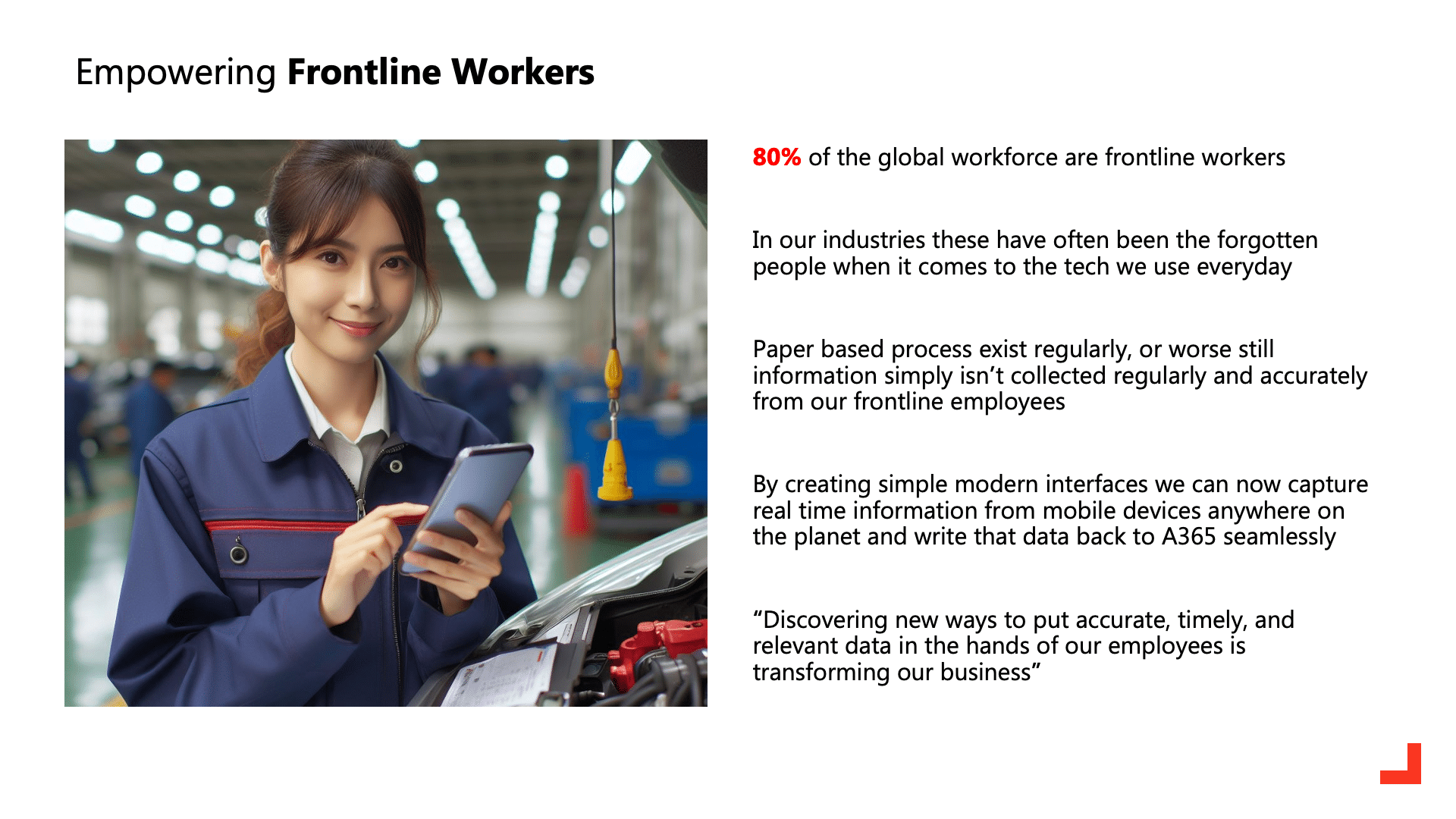Empowering frontline workers with the right tools and technologies is crucial in today’s fast-paced business world. Annata’s webinar series, “From Zero to Responsive: Empowering Your Frontline Workers with A365 and Power Apps,” is tailored to help businesses in the automotive, trucks & buses, and equipment industries tackle this challenge effectively.

This “Building your first app without code” session highlighted the transformative power of innovation and digitalization, illustrating how businesses can streamline operations and unlock new growth opportunities with the right technology at their disposal.
Missed the session? No worries! Catch the full recording below and dive into our quick 4-minute read recap. Learn the essential steps to build your first app without code and empower your frontline workers with A365 and Power Apps.
Steps to building your first app without code

Step 1: Selecting the data source
The initial step in building the app is to select the data source. Using Microsoft Power Platform‘s AI capabilities, Dave chose an existing table from the A365 application where vehicle delivery information is stored. This seamless integration with A365 enables the app to access and update delivery information in real-time.
Step 2: Creating the app
With the data source selected through Power Apps, the AI-powered tool swiftly generates a fully functional mobile app interface. The app features a gallery view for displaying a list of vehicle deliveries and a form view for updating delivery details. This responsive interface can adapt to different screen sizes and orientations, making it suitable for use on smartphones and tablets alike.
Step 3: Customizing the app
Although the AI-generated app is functional, Dave demonstrates how easy it is to customize the app to suit specific business needs. Using simple drag-and-drop controls thanks to Power Apps, Dave modifies the app’s layout, colors, and branding to align with the company’s brand identity. This level of customization allows businesses to create apps that not only function well but also reflect their unique brand identity.
Step 4: Testing and deployment
After customizing the app, Dave showcases how simple it is to test the app using the Power Platform’s built-in testing tools. Once the app meets all requirements, it’s deployed to a test environment for further evaluation by stakeholders and end users.
Step 5: Adding and customizing fields, testing the app
Continuing from where we left off, let’s delve into further customization of the app. After adding the device field, Dave shows how easy it is to add or remove fields as needed. For instance, if you decide you don’t need the delivery report status field, you can easily remove it from the app interface.
Step 6: Customizing field order and layout
You can also rearrange the order of fields to make the app more user-friendly. For example, you can move the name field to the top of the list for better visibility. Additionally, you can adjust the layout to suit your preferences, ensuring that the most important information is prominently displayed.
Step 7: Testing the app
Once you’ve made the necessary customizations, you can preview the app to test its functionality. The Power Platform allows you to preview the app in different screen sizes, such as tablet or mobile phone, to ensure that it looks and functions correctly on various devices.
Step 8: Enhancing user experience
Accessibility is a key consideration in app development. You can adjust font sizes and colors to improve readability and usability, ensuring that the app meets the needs of all users. Additionally, you can customize the layout to optimize the app for specific devices, enhancing the user experience for frontline workers.
Step 9: Ensuring data security and compliance
When sharing the app with users, it’s important to consider security and compliance requirements. The Power Platform checks user permissions at every step to ensure that they have the necessary access rights to view and modify data. This helps maintain data integrity and security within the app.
Step 10: Iterating and scaling
The app development process is iterative, allowing you to continually improve and scale your app. By leveraging the Power Platform’s low-code capabilities, you can quickly iterate on your app to add new features and functionality. This enables you to create sophisticated applications that meet the evolving needs of your business.
Building your first app without code advanced features
In future sessions of the webinar series, we’ll explore more advanced features of the Power Platform, such as AI controls. These features allow you to incorporate artificial intelligence into your app, enabling capabilities like text recognition and data filtering based on AI analysis. These advanced features further enhance the functionality and usability of your app, opening up new possibilities for innovation and automation.
Benefits of building your first app without code
The demonstration underscored the benefits of building apps without writing code. By leveraging the Power Platform’s AI capabilities, businesses can accelerate app development, reduce costs, and empower users to create their own solutions. This democratization of app development enables more people within an organization to contribute to digital transformation efforts, leading to faster innovation and improved business outcomes.
Empowering your frontline workers with A365 and Power Apps Part 2 and 3

As we wrap up Part 1 of our engaging webinar series, we’ve only just begun to unveil the transformative power of A365 and Power Apps for your organization’s frontline. In the upcoming segments, we’ll delve deeper into the intricacies of app customization and user experience enhancement.
Part 2 will equip you with the tools to tailor your app’s interface, ensuring it perfectly aligns with your business needs and branding. Meanwhile, Part 3 promises an insightful journey into advanced features such as AI controls, offering unparalleled opportunities for innovation and automation.
Join us for these exciting sessions as we continue to empower your frontline workers and drive digital transformation across your organization. Don’t miss out on the chance to revolutionize your operations and propel your business into a more responsive and efficient future.













